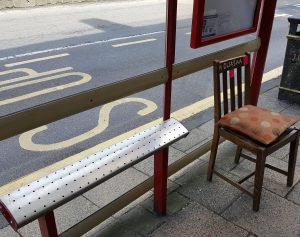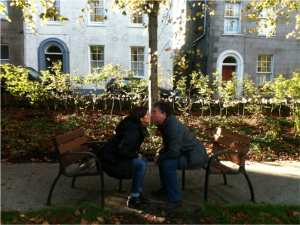I’ve a confession to make. I’m a bit obsessed with public realm schemes and public spaces. That obsession comes from seeing the power well designed public spaces can have on the way a place is perceived and used.
Public spaces are not just the bits between buildings and their function is more than to get you from A to B. They are the living room of a town or city; the places where people come together to do things in a shared space. Public spaces speak volumes about a town and how it is valued. Visitors spend a large part of their time exploring. How the streets and public spaces look and make visitors feel can transform the visitor experience and influence how long they stay, what they do and how they talk about their experiences to others. Oh and it may well influence how much visitors spend too.
Good public realm is the result of creative design and thoughtful solutions. It requires understanding the big picture, observing how people use a public space now and imagining how it might be used in the future. Good public realm works with the buildings and the wider setting. There is also forensic attention to detail, each element and installation adds up to a great space. You can experience it in totality or zoom in and connect with a detail. Quality underpins the approach, using materials and planting that is right for the setting.
Designing good public realm is part science, part art and part psychology. Maybe that is why I’m slightly obsessed.
Financial resources are often cited as the reason why the public realm looks the way it does but it can be as costly to do it badly as to do it well. In an ideal world you would tackle it all at once. In the real world the starting point is recognising what getting the public realm right can do for a place. Go look at some places where it works, find out why, what has been achieved by the investment and more importantly understand the process the town or city underwent to deliver something excellent. Take along all the people who are likely to be involved – engineers, architects, planners, regeneration staff and tourism professionals.
Of course, not all public spaces require major change or investment. Small interventions can lift a public space and make the ordinary distinctive. For me, the small things count. They are what make me stop and think what a place is telling me and why it is special. And from a tourism perspective, we know visitors are seeking something apart, different from the ordinary, experiences that create great memories.
So here are two stories about chairs in public spaces. Small interventions that speak volumes. The first is in Todmorden a town on the Yorkshire/Lancashire borders where an active local community has chosen ‘kindness’ as its motto. There is a bus stop with a covered shelter. It has the standard perch bench. Fine for the fit who don’t need it but not very helpful for the less able bodied or those weighed down with children or bags. By the bus stop there is a second hand furniture shop. Every morning the owner brings out a plain upright wooden chair, places it by the bus stop and puts a cushion on the seat. At the end of each day he brings it in again.
Clonakilty in County Cork, Ireland has redesigned the main street opening up into a little square at the end. Along the street there are fixed pairs of chairs with a table, places to stop and write a note, eat your packed lunch or maybe finish your homework.
And if you walk a little further you come to Emmet Square, the restored Georgian buildings now face into the tree lined square with a sculpture, fountain and seating and there are two very special seats facing each other, carefully designed to be just a kiss apart.


